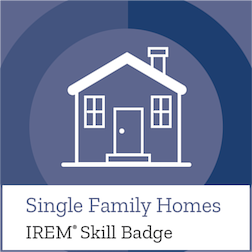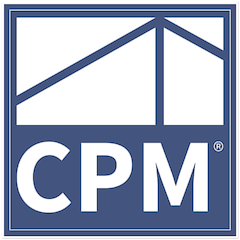REAL ESTATE AFTER COVID-19
Gaston Reboredo • April 22, 2020
This is a subtitle for your new post

Future of Real Estate after Covid-19
No question that the Corona Virus has changed our lives not only in the United States but all over the world. The “new normal'' as some people refer to our new life after this virus, because there is certainty our lives will not be the same after this crisis. All of us will experience changes in many aspects of life, travel, dining, public gatherings, the way we shop, public transportation, concert halls, sporting events and the list goes on and on. A vaccine is not expected to be available until 2021 and the Center for Disease Control expects a resurgence of the virus in the fall of 2020 so it is not over. It is not the intention and certainly beyond its scope, that this presentation discusses how this virus originated, if it was a mistake or the first steps on a planned biological war, an answer to this will further affect our lives on this planet. Hence, we only discuss what relates to our field, real estate investing.
How real estate has been affected and will continue to be affected if the crisis, even on a lesser extent, remains in place in our society. Here is my view by property sector and type in a very summarized way.
Housing:
No question that in the short term the housing market will be affected. With an expected unemployment rate of about 30% to 40%, as some economists predict, in the coming months, there is no question that the universe of buyers will shrink and the rental market will expand. Inventory of homes should increase as well as foreclosures and distressed properties. The forces of demand and supply will force prices down. Mid term, if inflation remains low as well as interest rates, which everybody expects, the market should stabilize as construction of new homes has been halted and population growth continues at the expected pace. Like any market, this brings opportunities for some and problems for others. The trend to shift to multifamily living, propelled by millennials and baby boomers, is expected to continue although it is not clear how the population will look at amenities, access and resident interaction in Condominiums and Rental Communities. Single family rental investment will also be positively affected despite the short term rent collection issues that may exist.
Retail: The sector that prior to this crisis was re-inventing itself due to the growth of e-commerce and changes in customer behavior. About 5 years ago customers started to look for an overall experience and true value proposition. Retail centers that offer unique retailers and products, entertainment, great dining and/or good value for the products sold, were the ones most likely to survive and do well. Big boxes were in decline as well as department stores and less need for the square footage at the store was already needed. Conversion of big boxes to smaller stores was already taking place and it was believed that brick and mortar retail was not going to disappear but had to change the customer experience that consumers were demanding and of good value. Centers that were part of mixed use developments or that instituted big changes were doing well. In today’s environment of big data, most corporate decisions are data driven. The amount of data that one can collect from consumers these days was incomprehensible a few years ago and retailers should use this data to make the right decisions. Smaller neighborhood centers that are mostly anchored by a grocery store and/or pharmacy had good positioning although many experts expected big developments in online grocery shopping with a strong delivery service. Pharmacies started to change as health centers, offering in-store walk-in clinics, more groceries and lab services trying to re-invent themselves. Retailers knew that e-commerce was expected to grow exponentially and were trying to adapt and change their business model based on data driven decisions. Covid-19 just accelerated this process. More and more people are shopping online and the segment is growing faster than expected. Pharmacies such as Walgreens and CVS are offering 1 to 2 business day free prescription delivery. Many grocery stores are offering delivery services, some at an additional cost, something that Publix supermarkets pioneered about 10 years ago and did not work out, the cost of being too visionary or understanding the future too well before it comes. The new service of curbside pick up that Walmart, Target and many groceries are offering is a step in between but we expect home deliveries to increase in groceries, pharmacies and online shopping will also continue to increase, in short e-commerce will continue to grow at an unanticipated pace.
The mandated shelter in place rules forced businesses to close for over a month in many places, laying off or furloughing personnel. Several businesses and many restaurants will never re-open. Others will have financial problems when they need to apply rules of physical distancing in bars and dining rooms (less tables, larger separation between clients), resulting in less customers per day but with the same operating costs. Many will not survive. How this will affect vacancy, rents and shopping center traffic is still a question mark, we see an uncertain future for retailers and owners of shopping centers and malls. It has been announced that JC Penny may close its doors, Macy’s, Nordstrom and many others are restructuring debt and maybe considering bankruptcy.
Office: In the last 10 years square footage of office space per employee has been declining due to advances in technology. Working from home or shared spaces, videoconferencing, advances in communications and bandwidth of almost all internet providers (as well as fiber optics) has shown employers less need for physical office space (less operating cost) and increase in productivity (less time and money wasted in employees commuting to and from home to the office location as well as happier employees). The growth of virtual offices, shared offices, has been exponential as well. Concepts such as Regus, WeWork and many others provide a business presence and the ability for face to face meetings when needed in hundreds of locations worldwide. Most companies are no longer confined to a “downtown location” and the trend was less and less physical office and more and more shard spaces and telecommuting.
With Covid-19 forcing almost everybody to adapt to a way to work from home, showed many people they could do things they never thought were able to do, increase productivity and employers are more aware of the potential in savings. Especially when children can return to schools (we do not see a big increase in remote learning with the exception of Universities and probably now high school) the work environment at home becomes more professional and conducive for business operations. Also the shared office space around the corner is cheaper and closer to home so whoever cannot work from a work office has other flexible possibilities. Therefore we will see less and less demand for office space and the trend of smaller offices in intelligent buildings with great amenities and shared spaces, in urban and suburban markets, to continue and increase.
Industrial and Warehouses: The demand for Distribution centers has been increasing in the last 20 years. First the globalization process of the last decade has been demanding better distribution of products and more storage space and cargo consolidation facilities and operations. E-commerce has been another factor increasing the demand for industrial/distribution properties. Logistic operations are demanding better spaces with more technology. Taller buildings, more column spacing and integration of latest technologies are important factors in the current design of buildings. Based on all our discussion in this brief article we expect that this sector will experience the highest growth in rent, demand and value. Often called the most recession proof property type, now more than ever well designed and located distribution/warehouse properties will be well positioned as good investment properties. As e-commerce continues to grow, especially with the push given by this crisis, short and long term demand of this property type will increase but its design to fit the needs of fabricators and distributors will be very dynamic, now more than ever. As technology develops and the consumer demands a real time buy today and deliver tomorrow kind of service, flexibility to adapt to faster and excellent service levels is essential and buildings may be tailored to fit some operations but most need to be versatile.
Covid 19 will bring, at least in the United States, a “back to home” approach of manufacturing, at least for many essential and/or tactical products which will increase demand for industrial facilities as well.
We need to see how we recover from this crisis and how and when the local and global economies get back on track. What is concerning is the national debt level and recent spending.
Gaston Reboredo CCIM CPM GRI
Broker
Florida Property Management Services LLC
Share this post

In the world of property management, insurance is one of the critical elements that ensure both the landlord’s and the property management company's protection from potential risks and liabilities. One of the common practices in property management is for the management company to be named as an "additional insured" on the landlord’s liability insurance policy. But what exactly does this mean, and what requirements must be met for a property management company to be added as an additional insured? This blog will delve into what it means to be an additional insured, the benefits and coverages it provides, and the steps involved for a property management company to be included in a landlord’s liability insurance. What is an Additional Insured? An "additional insured" is a person or entity that is covered under someone else's insurance policy. In the context of property management, this means that the property management company is protected under the landlord's insurance policy in case of claims or lawsuits related to the management of the property. By being named as an additional insured, the property management company receives many of the same protections as the landlord, particularly when it comes to liability claims. For instance, if a tenant or visitor is injured on the property and decides to file a lawsuit, both the landlord and the property management company could be named in the lawsuit. If the property management company is listed as an additional insured, the insurance policy will provide coverage for both parties in defending against the claim, thus reducing the property manager’s potential exposure to financial loss. Why Should a Property Management Company Be Added as Additional Insured? Adding a property management company as an additional insured is a common industry practice and offers several advantages for both landlords and property managers. Protection Against Liability Claims: One of the primary reasons to add a property management company as an additional insured is to protect them from potential liability claims. Since property managers are responsible for handling various aspects of the property, from repairs and maintenance to tenant relations, they are at risk of being named in lawsuits. As an additional insured, the property management company is shielded from these risks and can rely on the landlord’s insurance policy to handle claims related to their activities. Risk Mitigation: Having a property management company named as an additional insured helps mitigate risks for both the landlord and the property manager. It ensures that there is adequate coverage for potential claims that could arise from the property’s day-to-day management. This reduces the likelihood of disputes between landlords and property managers over who is liable for a particular claim, streamlining the process for addressing legal matters. Cost Savings: If a property management company is added as an additional insured, they do not need to carry separate liability insurance for that specific property. This can result in cost savings for the management company, which can be passed on to landlords in the form of reduced management fees. Of course, property management companies must carry their own general liability and professional liability insurance policies but being named as additional insured on a landlord's liability policy avoids the need of carrying a liability policy for that specific property which results in savings of operating costs and therefore provides the abiity for the management company to pass on those savings to the landlord in the form of lower management fees. What Coverages are Provided When a Property Management Company is Named as Additional Insured? When a property management company is added as an additional insured, they receive coverage for a wide range of potential claims and liabilities, including: General Liability Coverage: This is the core coverage that a property management company benefits from as an additional insured. General liability insurance covers bodily injury and property damage that occurs on the rental property. For example, if a tenant trips and falls due to a poorly maintained stairway, and both the landlord and property management company are sued, the insurance policy will cover the costs of defending the lawsuit, as well as any potential settlements or judgments. Property Damage Claims : If damage occurs to a tenant’s property or personal belongings due to the negligence of the property manager (for instance, a leak that was not promptly repaired), the additional insured coverage can protect the management company from liability. Legal Defense Costs: In the event that a property management company is sued, the insurance policy will cover legal defense costs, including attorney fees, court costs, and any other related expenses. This is particularly important as legal fees can quickly add up, even if the property manager is ultimately not found liable. Errors and Omissions (E&O): In most cases E&O coverage is provided as a separate liability policy that is obtained by the property management company at no cost to the landlord Requirements for Adding a Property Management Company as Additional Insured For a property management company to be added as an additional insured, several steps and requirements need to be met: Landlord Consent: The landlord must first agree to include the property management company as an additional insured on their insurance policy. This is typically negotiated as part of the property management agreement. It is in the best interest of both parties, as it ensures comprehensive coverage for any incidents that occur on the property. Endorsement: Adding a property management company as an additional insured usually requires an endorsement to be added to the landlord’s existing policy. This endorsement officially extends the coverage to include the management company. The landlord must request this endorsement from their insurance provider, and there may be a small fee associated with adding it. Policy Limits and Coverage Types: It is essential that the landlord’s policy has adequate limits and the right types of coverage. Property management companies should ensure that the policy includes sufficient general liability coverage, as well as coverage for property damage, bodily injury, and other risks specific to the management of rental properties. Verification and Documentation: Once the property management company is added as an additional insured, it is important to obtain a certificate of insurance (COI) from the landlord’s insurance provider. This document serves as proof that the management company is covered and can be kept on file for reference. Property managers should periodically verify that the coverage remains active and up-to-date, particularly when policies are renewed or if the landlord changes insurers. Adding a property management company as an additional insured on a landlord’s liability insurance policy is a crucial step in mitigating risks and ensuring comprehensive protection for both parties. By understanding what additional insured status means, what coverages it provides, and the steps involved in obtaining this coverage, property management companies can better protect themselves from potential liabilities and provide landlords with greater peace of mind. For landlords, including their property management company as an additional insured is a relatively simple process that can prevent costly legal battles and ensure seamless management of their rental properties. As with all aspects of property management, clear communication and well-defined agreements are key to protecting both parties and ensuring the long-term success of the property management relationship.

Choosing the right tenant for your rental property is one of the most critical decisions you will make as a landlord. A good tenant can ensure a steady income stream, maintain the property’s condition, and create a positive living environment, reducing the risk of costly repairs and legal disputes. On the other hand, a poorly chosen tenant can lead to frequent late payments, property damage, and a host of other issues that can make your life as a landlord much more difficult. To help you navigate this crucial process, here’s an in-depth guide on how to select the best tenant for your rental property. 1. Conduct a Thorough Screening Process The cornerstone of selecting the right tenant lies in a meticulous screening process. This process should begin with a comprehensive background check. A background check is crucial because it provides insight into the tenant's history, which can be a good predictor of future behavior. This check should include: Credit Check: A tenant’s credit report is a strong indicator of their financial responsibility. It reveals how well they manage their finances, whether they have a history of paying bills on time, and any significant debts they might be carrying. A higher credit score generally indicates that the tenant is reliable in meeting financial obligations. Criminal Background Check: Ensuring the safety of your property and other tenants is paramount. A criminal background check will help you identify any red flags, such as past convictions that might suggest a higher risk of property damage or issues with other tenants. While not all criminal histories should automatically disqualify a potential tenant, it’s important to weigh the nature and severity of any offenses. Eviction History Check: Checking a tenant’s eviction history can provide valuable insights. If a potential tenant has been evicted in the past, it’s crucial to understand the circumstances. Frequent evictions are a red flag and might indicate a pattern of non-payment or lease violations. Employment Verification: Verifying the tenant’s employment is essential to ensure they have a steady income source. Contacting their employer can confirm not only their job status but also their length of employment, which can be a good indicator of stability. Income Verification: Ideally, the tenant’s monthly income should be at least three times the rent amount. This ratio helps ensure that they can afford to pay rent consistently. You can verify this by requesting recent pay stubs, bank statements, or a letter of employment. 2. Assess Financial Stability Financial stability is one of the most critical factors in tenant selection. Even if a tenant has a clean background, if they do not have the financial means to pay rent consistently, they may not be the right fit for your property. Here’s what to consider: Income-to-Rent Ratio: As mentioned earlier, the tenant’s income should ideally be three times the rent. This ratio provides a buffer for the tenant’s other financial obligations and helps reduce the risk of late payments. Savings and Financial Reserves: Tenants with some savings or financial reserves are often better equipped to handle unexpected expenses without defaulting on rent. This information might not always be available, but if a tenant voluntarily shares it, it can be a good sign of financial prudence. Debt-to-Income Ratio: A tenant may have a high income, but if they are also burdened with significant debt, their ability to pay rent consistently could be compromised. Reviewing their debt-to-income ratio can provide a more complete picture of their financial situation. 3. Check References from Previous Landlords References from previous landlords are one of the most valuable tools in your tenant selection arsenal. These references can provide firsthand insights into the tenant’s rental history and behavior. Here’s how to effectively use landlord references: Rent Payment History: Ask previous landlords whether the tenant paid rent on time and if there were any issues with late payments. Consistent on-time payments are a strong indicator of a reliable tenant. Property Maintenance: Inquire about how well the tenant maintained the property. Did they leave the property in good condition? Were there any damages beyond normal wear and tear? A tenant who takes care of the property is less likely to cause expensive damage. Lease Compliance: Did the tenant comply with the terms of the lease? Ask about any issues related to noise complaints, unauthorized occupants, or other lease violations. A tenant who respects the lease terms is likely to be easier to manage. Reason for Moving: Understanding why the tenant is moving can also be telling. Are they relocating for a job, or are they leaving because of unresolved disputes with the previous landlord? The reason for moving can provide context to their application. Verify you are talking to the right person, the actual landlord or agent and that he/she is not trying to get rid of a bad tenant 4. Evaluate Personal Traits and Compatibility While financial stability and a clean rental history are crucial, the tenant’s personal traits also play a significant role. You want to find a tenant who will not only pay rent on time but also be a responsible and respectful neighbor. Here’s what to consider: Communication Skills: Good communication is key to a successful landlord-tenant relationship. Evaluate how responsive and clear the tenant is in their communications during the application process. A tenant who communicates well is likely to report maintenance issues promptly and adhere to lease terms. Respect for Property and Neighbors: Consider the tenant’s attitude toward property maintenance and neighborly behavior. A tenant who shows respect for their living environment and others is likely to be a positive presence in your property. Stability and Longevity: If you’re looking for a long-term tenant, consider their stability. Do they have a stable job or family ties in the area? Tenants who are likely to stay long-term reduce turnover costs and the stress of frequent tenant changes. 5. Trust Your Instincts, But Stay Within Legal Boundaries As a landlord, it’s important to trust your instincts when evaluating potential tenants. If something feels off, it’s worth taking the time to investigate further. However, it’s equally important to ensure that your decision-making process complies with Fair Housing Laws. These laws prohibit discrimination based on race, color, national origin, religion, sex, familial status, or disability. Make sure your criteria are consistent for all applicants and based on legitimate business reasons. 6. Set Clear Expectations Early On Before finalizing your decision, have a detailed conversation with the prospective tenant about your expectations. Discuss: Rent Payment: Clarify when rent is due, how it should be paid, and any late fees that apply. Maintenance Responsibilities: Outline what maintenance tasks the tenant is responsible for, such as yard work or changing air filters. Property Rules: Discuss any property-specific rules, such as noise restrictions, parking arrangements, and pet policies. Clear communication of expectations can prevent misunderstandings and conflicts down the road. It also gives the tenant an opportunity to ask questions and ensure they are comfortable with the terms. 7. Use a Comprehensive Lease Agreement A well-prepared lease agreement is essential to protecting both you and your tenant. The lease should cover all aspects of the tenancy, including: Rent and Deposit Details: Clearly state the rent amount, due date, and security deposit terms. Lease Duration: Specify the lease term and any renewal options. Maintenance and Repairs: Define who is responsible for routine maintenance and how repair requests should be handled. Rules and Regulations: Include any property rules, such as noise restrictions or pet policies. Termination Conditions: Outline the conditions under which the lease can be terminated by either party. Having a comprehensive lease agreement ensures that both parties understand their rights and responsibilities, reducing the potential for disputes. Selecting the right tenant is not just about filling a vacancy; it’s about finding someone who will respect your property, pay rent on time, and contribute positively to the community. By conducting thorough screening, assessing financial stability, checking references, and considering personal traits, you can significantly increase your chances of choosing the right tenant. Remember, a careful selection process is an investment in the long-term success and profitability of your rental property.











